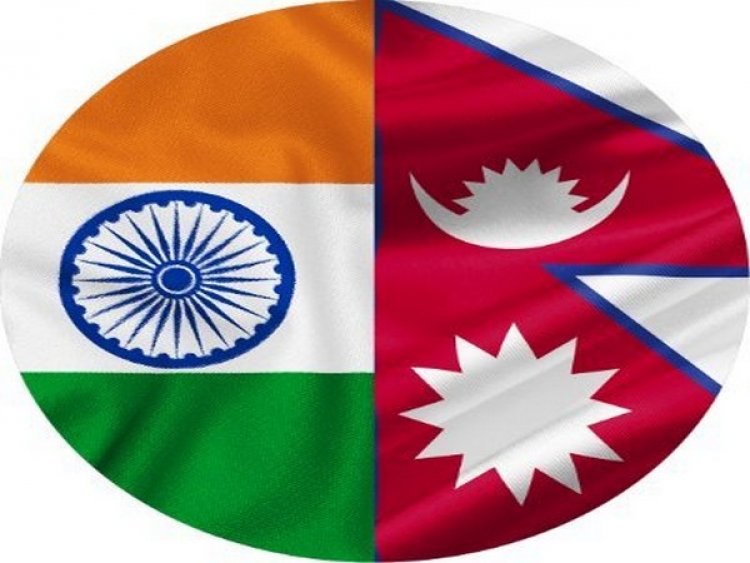India - Nepal: Ties Improve
Asia News Agency

Nepal Prime Minister Pushpa Kamal Dahal ‘Prachanda’ described his four day visit to India as ‘successful’.
During his path-breaking visit to Nepal in August 2014, writes Rakesh Sood (former Indian diplomat who served as Ambassador to Nepal) “Prime Minister Modi had invoked ‘neighbourhood first’ to denote a new beginning in relations. To highlight the focus on connectivity, he coined the acronym HIT, covering Highways, Infoways, and Transways. However, relations took a downturn in 2015 with the economic blockade. Repairing the relationship has been a slow process but results are now visible, leading Mr. Modi to recall and revive the old acronym.”
Hydropower cooperation
For years, there have been statements about cooperation in the hydropower sector, but, gradually, things are looking up. It is no longer dependant on electricity imports from India. In fact, it can now export power to India. In 2021, Nepal made a modest beginning by exporting 39 MW; the following year it went up to 452 MW, earning Nepali rupees 11 billion in export earnings. In the lean season, “Nepal does import power from India but its dependence has dropped from 20% to 10% during the last five years."
Both sides have finalised a long-term power trade agreement targeting the export of 10,000 MW within a 10-year time frame.
Movement of goods and people
To facilitate the movement of goods and people, Ambassador Sood notes the Rupaidiha-Nepalgunj Integrated Check Post was inaugurated, work begun on the Sunauli-Bhairahawa integrated check post and an MoU signed for another at Dodhara Chandni. There is a plan to extend the Jaynagar-Kurtha railway line inaugurated last year, while more links are to be taken up. After the Motihari-Amlekhgunj petroleum pipeline was operationalised in 2019, work has begun to extend it to Chitwan and an MoU for a new pipeline between Jhapa and Siliguri signed, which includes terminals and other infrastructure. Negotiations on these projects have been time consuming; the challenge is to ensure their implementation on time.
Three difficult issues
“The fact that both sides successfully avoided controversial issues and public disagreements,” according to Ambassador Sood “went a long way in keeping the focus on economic ties and ensuring that the Prachanda visit was successful. Of the three difficult issues, two are of recent origin and the third is a legacy issue.”
Agnipath scheme: The latest issue is the Agnipath scheme that impacts the recruitment of Gurkha soldiers into the Indian Army’s Gurkha regiments, a practice that began in 1816 by the British Indian Army. This was continued under a 1947 treaty based on ‘equal treatment’. The Agnipath revision of the terms “needs to be discussed between the two armies and the defence and finance officials concerned….”
Kalapani boundary issue: The second is the Kalapani boundary issue that was deliberately stoked as a nationalist cause by Mr. Oli in 2020, when his position as Prime Minister was under threat. A constitutional amendment was pushed through and Nepal’s map changed unilaterally. Resolving this, according to the Ambassador “will need time because a lasting solution will need political wisdom and understanding.”
The legacy issue: The legacy issue is the India–Nepal Treaty of Peace and Friendship of 1950. In Nepal, conviction has taken root that the Treaty is unfair as it was imposed somehow. This, writes the Ambassador “ignores the reality that in 1949, the Nepali regime was perturbed by the Maoist revolution in China and the subsequent takeover of Tibet. It sought an understanding with India, and the 1950 Treaty, in large measure, reflects the provisions of the 1923 Treaty between Nepal and British India. In fact, the Treaty enables Nepali nationals ‘equal treatment’ in terms of employment and permits them to apply for any government job, except for the Indian Foreign Service, the Indian Administrative Service and the Indian Police Service. Nepali nationals work in the Indian private and public sector, have joined the revenue services, and in the Army, have risen to become two-star generals.”
The demand to review the Treaty was officially raised first in 1995; in 1996, it was on the agenda of the Foreign Secretary’s meeting. Subsequent summits have included a reference to ‘review and update’ it, but substantive talks have not taken place. However, “some of the cobwebs of history need to be cleared so that discussions can take place in an objective manner that addresses the concerns of both countries.”
















